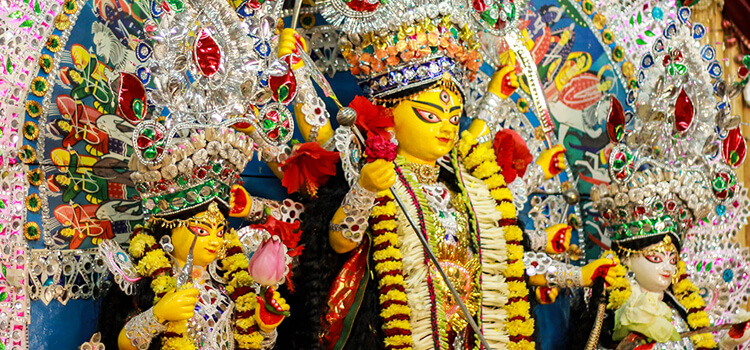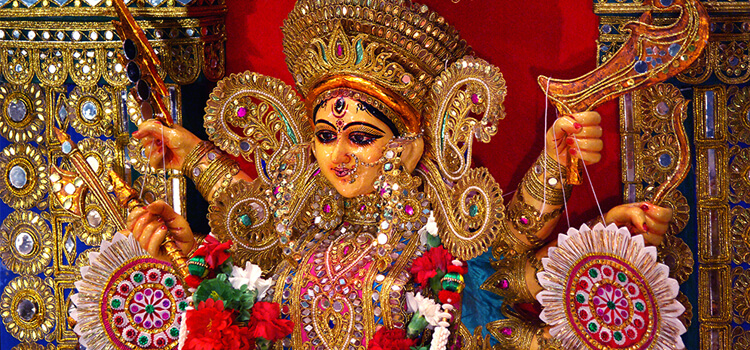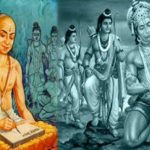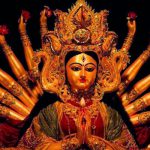What is Durga Ashtami Pooja?
Mother Durga is the incarnation of Goddess Shakti. The eighth day of Navratri is known as Durga Ashtami Pooja. This festival is also known as Astra Pooja, which denotes a festival for all weapons. This day is also known as Vira Ashtami, where martial arts are given high importance.
Navaratri, which is based on the Lunar Calendar, generally falls during October and November. Durga Pooja is also called Durgotsav. Goddess Durga means “the impermeable” or “the invisible, and also represents various attributes like morality, strength, power, and protection.
The significance of Durga Ashtami Pooja:
During all the nine days of Navratri , the Goddess is worshipped as Durga, Lakshmi, and Saraswati. On this day, Goddess Kali appeared from the forehead of Mother Durga and annihilated Chanda, Munda, and Rakthabija. The first three days of Navrathri is celebrated for Goddess Lakshmi, the next three days are for Goddess Saraswati. The 64 Yoginis and Ashta Nayikas, the eight incarnations of Goddess Durga, who are Brahmani, Maheswari, Kaumari, Vaishnavi, Varahi, Narasinghi, Indrani and Chamunda are worshipped during the Durga Ashtami Pooja. The last three days celebrate Goddess Parvati. The tenth day is Vijayadashami which means “victory”, which can be achieved by the combined forces of all the goddesses to excel in all our pursuits.
The mythology behind Durga Ashtami Pooja:
Durga Ashtami Pooja is celebrated every year in the Hindu month of Ashwin, which usually falls between October and November. Durga Ashtami celebrates the victory of Goddess Durga over the evil buffalo demon, Mahishasura, who was granted a wish by Lord Brahma that he would only be killed by a woman warrior. Goddess Durga was created by the Trinity of Goddesses – Lakshmi, Goddess Saraswathy, and Goddess Parvati. This festival has significance with Lord Rama, where he invoked Lord Kali’s blessings before indulging in war. To celebrate Lord Rama’s victory over evil, people started celebrating this day.

Rituals of Durga Ashtami Pooja
This is the festival celebrated by women across India It is more of a community festival, where gifts are exchanged among the ladies. Shlokas are chanted early in the morning across all the houses and prayer halls. Mothers pray for the children’s future and good life, especially during Durga Pooja. Ashtami is observed on the eighth day. Navami is celebrated on the ninth day of Navratri. Dashami is the last day of Durga Pooja, where it is celebrated in a grand manner by offering Goddess Durga fruits, flowers and special sweet preparations. In cities of Bengal, large statues are placed on all streets, accompanied by music and dance.
Benefits of celebrating Durga Ashtami Pooja
Worshipping Durga during this pooja is very auspicious. The festival invokes blessings from the ancestors and blesses people with abundant wealth, health and happiness. Durga also protects her devotees like an amulet, and bestows strength and courage for success in all their pursuits.



I don’t think the title of your article matches the content lol. Just kidding, mainly because I had some doubts after reading the article.
Thanks for sharing. I read many of your blog posts, cool, your blog is very good.
Your article helped me a lot, is there any more related content? Thanks!